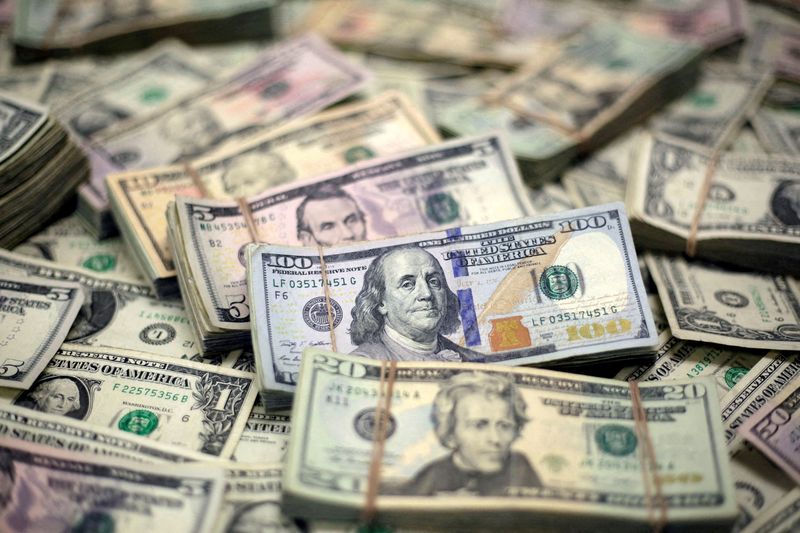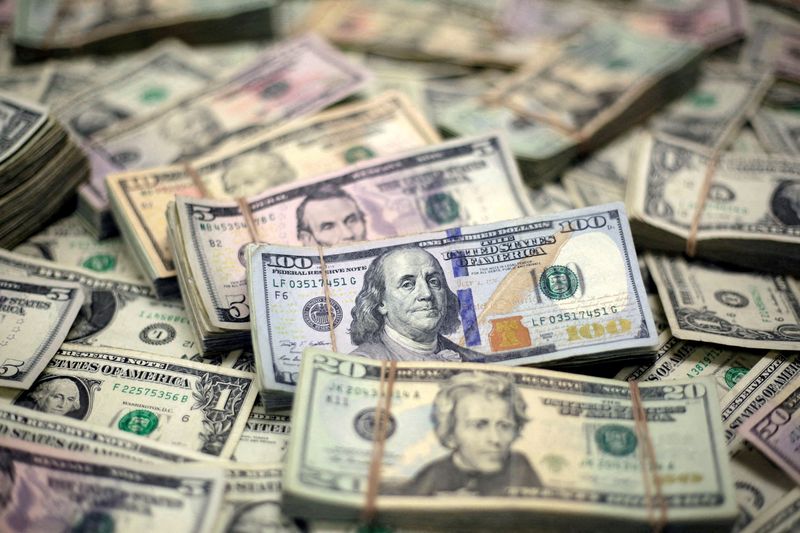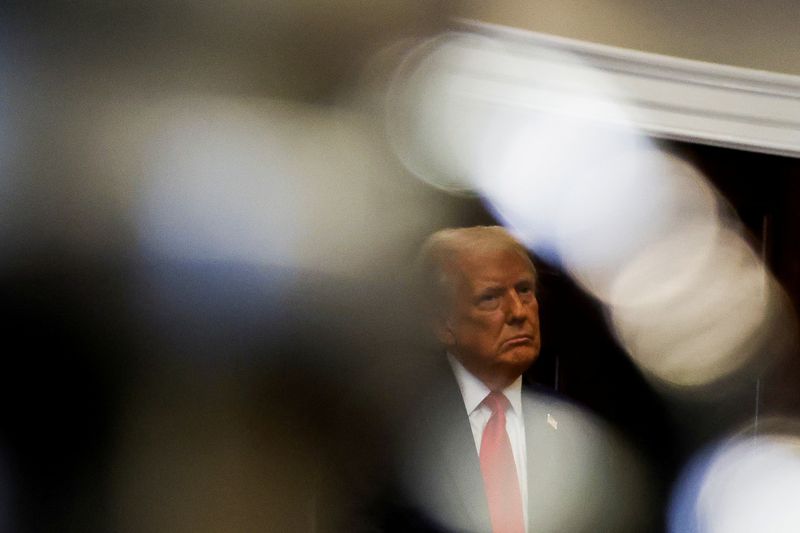
By Stefano Rebaudo and Kevin Buckland
(Reuters) – The safe-haven dollar edged down on Thursday on increasing risk appetite with traders looking ahead to speeches from key Federal Reserve policymakers and economic data later in the day for clues on the pace of interest rate cuts.
Meanwhile, the Swiss franc rose after the Swiss National Bank cut interest rates by 25 basis points. Future markets and some analysts expected a bigger cut of 50 bps after the Federal Reserve made such a move last week.
European and Asian stocks extended a China-led rally, fuelled by optimism over the country’s aggressive stimulus package and news that more support could be in the works.
The dollar rebounded sharply overnight from its lowest levels in over 14 months. It tumbled on Tuesday after data showed that U.S. consumer confidence dropped by the most in three years in September amid mounting fears over the labour market, increasing market bets on Fed rate cuts.
“Beijing has juiced the markets during what was otherwise a typically quiet day ahead of U.S. data,” Matt Simpson, senior market analyst at City Index, suggesting the risk-on sentiment could be extended in Europe.
The dollar index, which measures the currency against the euro, sterling, yen and three other major peers, eased 0.1% to 100.78, following a 0.57% jump on Wednesday, its biggest one-day gain since June 7.
“Our view is that the Fed will lower rates at a faster pace than its peers. This will continue to chip away at the U.S. dollar’s yield advantage, a key support for the currency over the past two years,” said Mark Haefele, chief investment officer at UBS Global Wealth Management.
The Swiss franc rose 0.14% versus the dollar to 0.8492, after the SNB decision and was up 0.11% at 0.9457 versus the euro.
Markets had priced in a 55% probability of a 25 basis point cut before the announcement.
SNB Chairman Thomas Jordan said the central bank was ready to cut interest rates again and recently acknowledged difficulties that the recent rise in the franc has created for exporters. Later on Thursday, Fed Chair Jerome Powell is scheduled to give pre-recorded remarks at a conference in New York, where New York Fed President John Williams will also speak. Boston Fed President Susan Collins and Fed Governors Michelle Bowman and Lisa Cook take to the podium at various other venues as well.
Weekly U.S. jobless claims data will also be closely scrutinised, given the Fed’s shift in focus to employment over inflation.
The euro was little changed at $1.1136, after pulling back sharply from $1.1214, a high not seen since July last year.
Analysts flagged that the euro has performed well against the dollar this week despite weak German economic data and concerns surrounding the French budget.
After the stimulus plan, a better outlook for Chinese demand probably fed back into expectations for the economies of Germany and, more broadly, Europe.
The yen hit a three-week low of 145.04 per dollar and last fetched 144.74.
Minutes from the Bank of Japan’s July meeting, when the central bank raised short-term interest rates, showed policymakers were divided on how quickly the central bank should raise rates further.
Investors were also closely watching political developments as the Liberal Democratic Party will choose a new leader on Friday, with the winner due to take over as prime minister due to the party’s majority in parliament.
A win for Sanae Takaichi would have the biggest impact on the yen’s performance as she favours maintaining a loose BoJ policy and a weaker yen.
MUFG estimated a probability of 20% for Sanae Takaichi to win and of 45% for Shinjiro Koizumi, adding that it was unlikely that one candidate would secure a majority in the first round of voting.

The Australian dollar added 0.59% to $0.6863, finding its feet after Wednesday’s sharp retreat from a 19-month peak of $0.6908. [AUD/]
The Chinese yuan edged higher to 7.0149 per dollar in offshore trading after it pulled back on Wednesday from its highest since May of last year at 6.9952.
This post is originally published on INVESTING.



